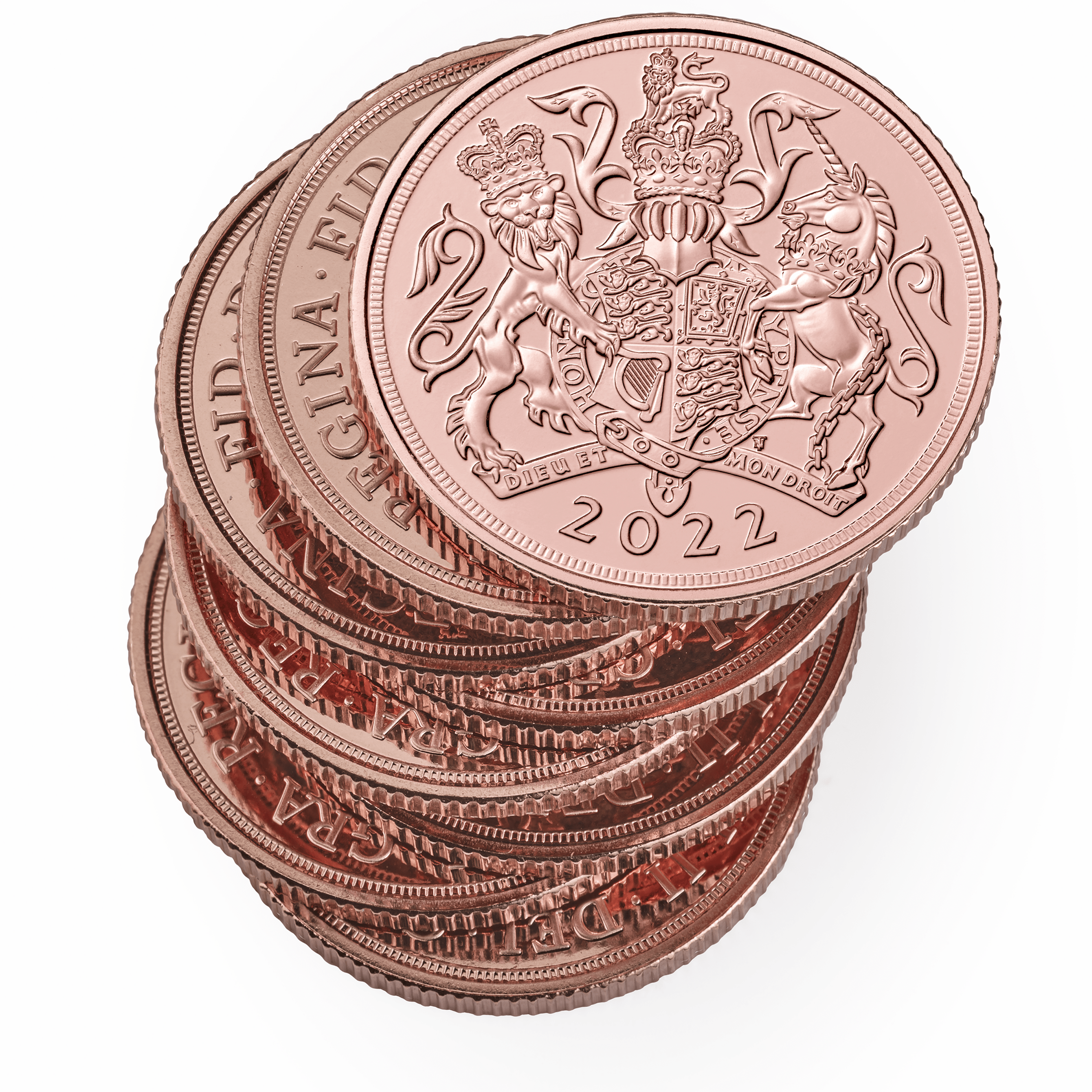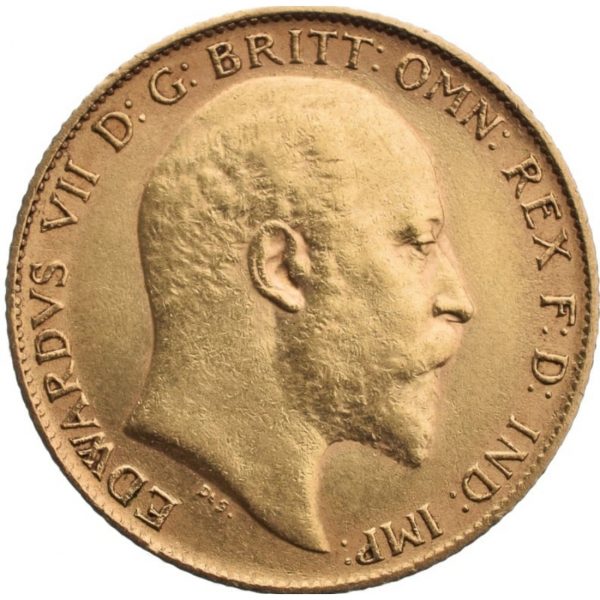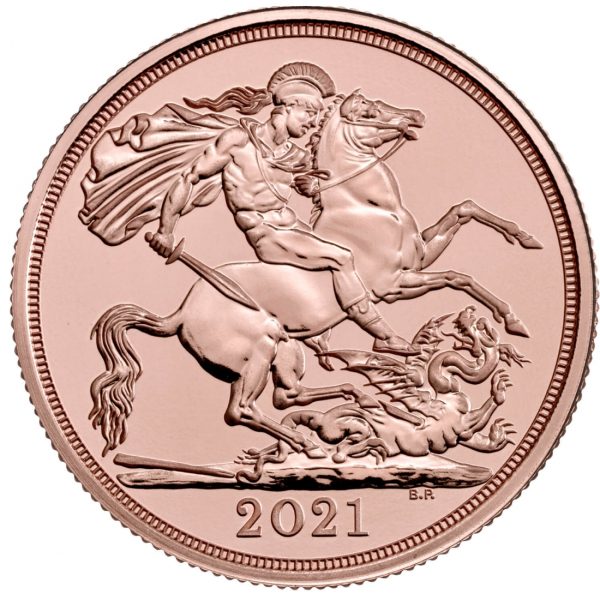Complete Guide To Half Sovereigns
03/05/2023Daniel Fisher
Free & fully insured UK Delivery. Learn more
Secure & flexible payments. Learn more

Buyback Guarantee Learn more
Half sovereigns are 22-carat gold coins with a value which can be influenced by numismatic factors, alongside their bullion value.
They are classed as British legal tender (and have a nominal face value of 50p), which of course means they are free from Capital Gains Tax. It’s for this reason, they are extremely popular amongst UK coin collectors and gold bullion investors alike.
Gold half sovereigns are cheaper to buy than full gold sovereigns, due to their smaller size, giving investors a great option to start their gold portfolio.
Half sovereigns were initially minted during the reign of Henry VII, though the earliest sovereigns you’ll find in the modern day are from the reign of King Henry VIII, launched in 1544.
Their production was carried on by Edward VI, who also increased the fineness of the coins to 23 carats during parts of his reign.
In 1604, the last half sovereigns were minted by James I, before they were replaced by the half guinea.
Production was then started again over 200 years later by George III, who oversaw a massive change in British coinage.
British half sovereigns were discontinued once again in 1926, after having issues struck during the reigns of George IV, Queen Victoria and King Edward VII.
Production was again restarted by Queen Elizabeth II in 1980 and continues to be minted each year as an uncirculated bullion coin.
In this section, we will discuss how half sovereigns can serve as a diversification tool for investment portfolios. By understanding the benefits of diversifying with half sovereigns, investors can make informed decisions about their gold investments.
Investing in half sovereigns can help diversify an investment portfolio by spreading risk across different asset classes. Gold, in general, is considered a safe-haven asset and can protect against inflation and market volatility. Half sovereigns, in particular, offer the following benefits for diversification:

Before finding the gold value of your half sovereign coin, you must first identify whether you have a half sovereign or a full sovereign.
The easiest way to do this is by measuring the size of the coin. Typically, a half sovereign measures around 19.30 mm in diameter, while a full sovereign has a diameter of 22.05 mm.
You can see a the differences between a full sovereign and a half sovereign, in our insight guide.
Gold half sovereigns are worth less than their full sovereign counterparts, but still hold value for their gold content. This can easily be easily calculated by taking the current gold spot price and multiplying it against the gold content of the coin. Dealers may pay you a slight discount to this value.
Financial returns on trading these British coins are boosted as they are both Capital Gains Tax-exempt and VAT free.
To calculate the value of gold in a half sovereign using the troy ounce price, you need to follow these steps:
Read our Insiders Guide to Gold & Silver investment first
There are occasions where a gold half sovereign coin will be worth more than just the gold content, sometimes a lot more!
In addition to the gold content, your half sovereign may have increased numismatic value. To assess this, consider the following:
Understanding the weight of a gold half sovereign is crucial for assessing its gold content and value. In this section, we will explore the weights of different sovereign sizes, including the half-sovereign, full sovereign, and others, to provide a comprehensive understanding of their respective weights and gold content.
A half sovereign typically weighs 3.99 grams, with a gold content of 22 carats (91.67% gold and 8.33% copper alloy). The gold content of a half sovereign amounts to approximately 3.6575 grams of pure gold.
The half-sovereign’s diameter measures 19.30 mm, making it a popular choice for collectors and investors alike.
Half sovereign designs are largely the same as the full sovereign version. On the obverse of the coin, you will always find the picture of the reigning monarch. Before 1817, the reverse usually featured the royal shield.
Coins that were minted in other countries, such as via the Australian mint, can feature the name of the country across the back.


Buying half sovereigns can offer one of the lowest entry points for investors starting their gold portfolio. They are CGT-free, have highly liquid markets and bring with them the same benefits as investing in other precious metals.
For the best value coins you may want to start with a standard half sovereign, which are the same designs as you will find on the full sovereigns. This design is world famous, featuring St George and the dragon on the reverse, with the obverse featuring the reigning monarch.
Half Sovereigns are particularly popular amongst investors who fear for the future of the Fiat currency system (money as we currently know it).
With inflation, Quantitative Easing and global debt at record levels, concerns grow that traditional currencies are simply losing value and purchasing power. If this situation continues to escalate, very small gold tokens, such as Half Sovereigns, could be used to acquire goods and services.
Using larger 1oz coins would be far more problematic when trying to purchase lower value goods such as groceries.
You should note that half sovereigns can have higher premiums than is standard, due to their smaller units having slightly higher production costs.
There are other options available, should you want to see some of the best coin investments available.
They remain a great investment though, and the top tip from the brokers at physicalgold.com would be to buy the coins in higher quantities to offset the production costs.
Selling a half sovereign to collectors involves finding potential buyers interested in the coin’s rarity, condition, and history.
Proper presentation and marketing are crucial when selling to collectors, as they seek coins with unique features and high-quality conditions.
They may require a minimum level of coin condition (known as grading). Examples are Brilliant Uncirculated (BU) for pristine coins, Extremely Fine (EF) for those with slight surface marks and Very Fine (VF) which reflects coins with some wear on high points but no dents on edges.
To attract collectors, consider using online platforms like coin forums, social media groups, or specialised auction sites to showcase your coin.
When presenting your coin, be sure to provide a detailed description, including information on its mint, year, rarity, and any other distinguishing features.
Selling your half sovereign to a bullion dealer is a convenient and secure way to realise its value.
Reputable bullion dealers, such as Physical Gold, offer competitive prices and a straightforward process for selling gold coins. We are fully accredited and offer guaranteed buyback prices for our customers. Take a look at our reviews to see why customers rate us so highly. Some other benefits are:
So give us a call today on 020 7060 9992 or drop us an email on info@physicalgold.com to speak with one of our customer service team today.
include instant payment, accurate valuations, and professional handling of your coins.
Live Gold Spot Price in Sterling. Gold is one of the densest of all metals. It is a good conductor of heat and electricity. It is also soft and the most malleable and ductile of the elements; an ounce (31.1 grams; gold is weighed in troy ounces) can be beaten out to 187 square feet (about 17 square metres) in extremely thin sheets called gold leaf.
Live Silver Spot Price in Sterling. Silver (Ag), chemical element, a white lustrous metal valued for its decorative beauty and electrical conductivity. Silver is located in Group 11 (Ib) and Period 5 of the periodic table, between copper (Period 4) and gold (Period 6), and its physical and chemical properties are intermediate between those two metals.